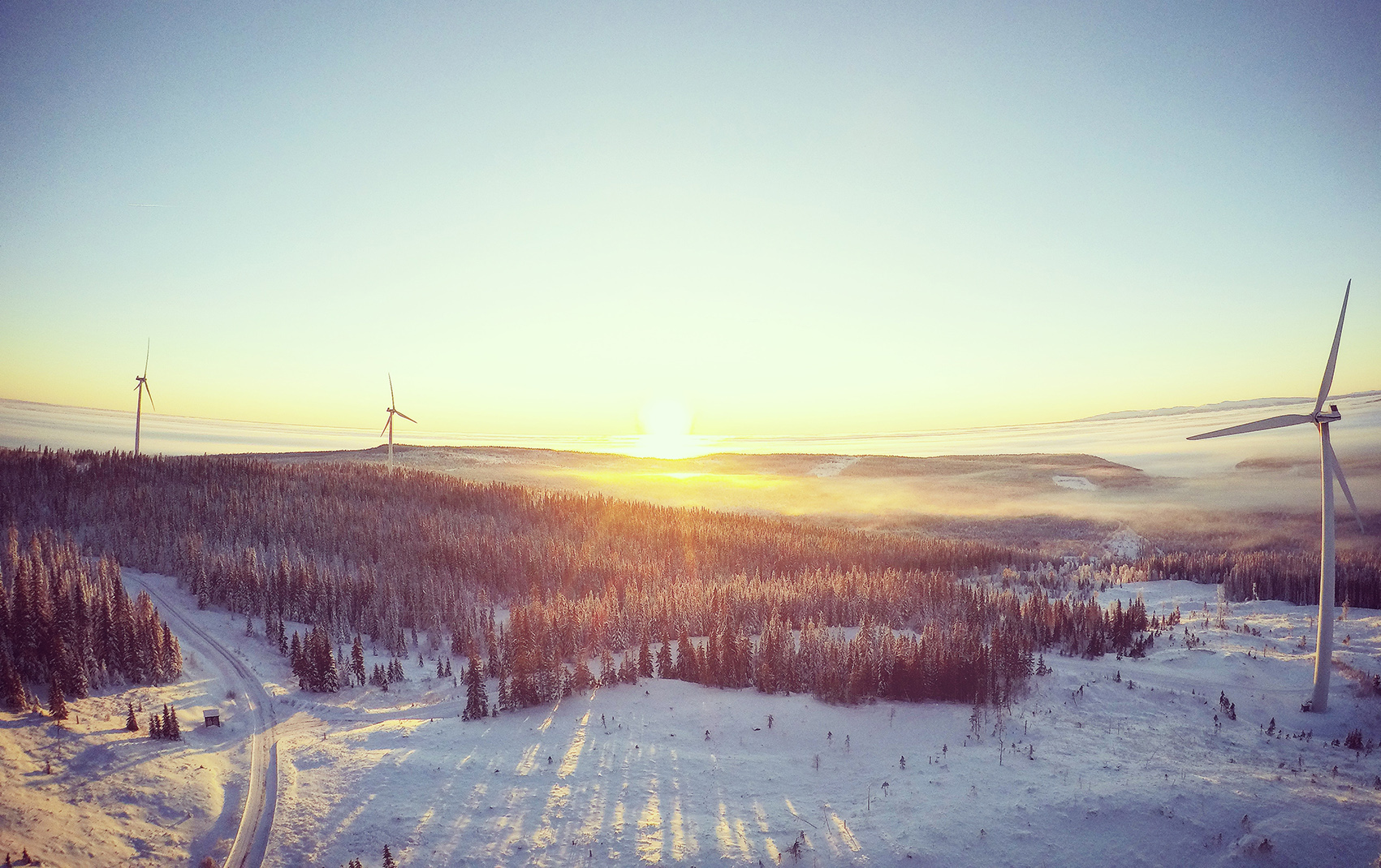Year 2023 was the second busiest wind power construction year in our history. During 2023, 212 new wind turbines came on-line in Finland. The pace of construction in the coming years will increase our wind power capacity, as new projects are being actively developed both onshore and offshore. At the same time, economic uncertainty, rising costs and war in Europe have also hit wind power, and it is taking longer than before to secure new investments. Continuity of investment is important for supply chains and industrial projects that need Finnish, clean and affordable power generation. Increasing clean power generation is a key element in Finland’s competition for new industrial projects.
Finland now has 1,601 wind turbines with a cumulative capacity of 6,946 megawatts (MW), with a capacity increase of 212 turbines and 1,280 MW in 2023. During the year, 4 wind turbines with a total capacity of 12 MW were dismantled in Finland.
Wind power in Finland is still heavily concentrated in North Ostrobothnia and other Ostrobothnian regions. In 2023, the regions of North Ostrobothnia, Ostrobothnia and South Ostrobothnia had the highest number of new power plants. North Ostrobothnia accounts for 38.5% of Finland’s wind power and is also home to the majority of projects under development. “While regionally balanced construction would be very important for many reasons, it is nice to see that those municipalities that already have a lot of wind power are also promising more. People are used to wind power and do not feel it is an unreasonable inconvenience,” says Anni Mikkonen, CEO of the Finnish Wind Energy Association.
An increase of around 1,000 MW is expected for 2024 and almost 1,500 MW of new wind power capacity is already known for 2025. Although the projects under construction are well known, they are easily shifted from one year to the next, earlier or later than planned. “The actual erection of the turbines is planned to take place during the summer season, the windiest time of the year. However, the commissioning phase can take several months, so the end of the year is always an exciting time as to which side of the year the turbines will be considered completed,” says Mikkonen, describing the phases of wind power construction.
“Even at the end of last year, new investment decisions were being made on projects that will be completed as early as 2025. Rising costs and general uncertainty mean that everything is being negotiated more carefully and for longer – things are confirmed at a later stage. We are confident about the continuity of the construction momentum. Continued construction is extremely important: Finland cannot compete with many other countries for subsidies to veto projects and other new clean transition industrial projects. Our competitive advantage lies in being able to build more clean and affordable electricity generation, with sensible regulation and smooth licensing processes. This is important to keep firmly in mind this year as the government’s numerous wind energy envelopes are implemented. Finland must keep up with the competition for new giant investments and the work to modernise the energy system must go ahead – regardless of the economic cycle,” says Mikkonen.


